At some point in your life, you may have heard a few of the many rumors floating around out there about Dungeons and Dragons. Perhaps you read about the many controversies surrounding it.
Or maybe your friends play, and you’re curious about dabbling in it yourself, but you’ve heard it can be addictive . Whatever the case may be, we’re here to set the straight facts about D&D once and for all.
Sure, Dungeons and Dragons may look like fun, feel fun, and play fun, but here’s the real and honest truth about the game: it really is that fun.
Yep, you’ve heard about it from us here first, and we’re not going to lie to you. Playing D&D can absolutely be habit-forming, and once you start, you just might not want to quit.
Why? Well, in a nutshell, it’s just…amazing. Random. Unpredictable.
You never know how any one campaign is going to end, and to find out, you get to roll a die or two (sometimes a 20-sided die, sometimes just one of the many other types of dice ) before you get to find out that you actually dealt any critical damage.
D&D is a game where, if you’re the Dungeon Master, you get to be completely reasonable — or even sadistically unfair — over your players.
During gameplay, you can just as easily send them to several traps and pits, all right before giving them the holy grail (or whatever end you set for them).
And before you stop playing after the DM says you fell into a trap, you can still push your luck. You can argue (in a civil way) and tell them a solution you’ve thought of. If it’s valid, they can set you free. It’s incredible!
On the other hand, playing is no fun if you don’t know how to play in the first place. Just step right up and take a sip of coffee (or your preferred gaming drink of choice), settle into your most comfortable chair, and grab yourself a snack, as this one’s going to be a slightly longer read.
But after this, you could get to spend hours upon hours, slashing your swords and casting spells in the many worlds of D&D! But first, before we dive in…
How many Worlds are There?
To be perfectly honest, the answer is only this: none of it. D&D is more like a ruleset than a world.
Sure, there are species, races, creatures, and classes, among others, but the D&D sets you buy from Wizards of the Coast and their retailers just contain a rulebook and some game essentials.
When we say a “Dungeons and Dragons world”, what we really mean are campaigns . These are pre-set maps and rulesets with their own lores and history. Your D&D set probably has these, too. These are written by either the good folk from the D&D team or fan-made.
For the sake of this post, we’ll just go over the regular ruleset. Modding and homebrewing can go later once you really get the hang of the game.
Anatomy of a Dungeons and Dragons Game

Let’s go over the stuff that makes the game a game. Dungeons and Dragons is a game between two to five people. It can be really short, like 10 to 20 minutes long. Or you could drag it on for years , as long as you and your playmates are up for it.
The Things You Need
Every game of D&D needs a few stuff to play with before you begin:
- The Set Of Dice
- Character Sheets
- Dungeon Master’s Notes
First things up, why a set of dice? D&D uses seven dice to check for different sets of probabilities. If all you use are regular six-sided dice, then every chance-related event will have a probability of one in six.
Using 20-sided dice makes it so the chance for something becomes a one in twenty. We’ll get down to the dice later on.
Next, character sheets are there so you could put down information about the characters. Simple. Really, it’s that simple. Players write down their names, levels, aspirations in life, and whatever else these characters are. It’s like a resume for adventurers!
The last one should be the Dungeon Master’s Notes. This one doesn’t have any real name, you can just call them that: the notes.
It’s where the dungeon master or DM writes down stuff to keep track of things. Normally, DMs would have a cover so other players can’t peek at what’s in store for them.
The Players
At the bare minimum, the game needs at least two players:
- The Dungeon Master
- The Other Player(s)
The Dungeon Master acts a little like a narrating organizer to the game. They aren’t really called “players,” per se. Rather, they tell the stuff that happens, when it happens, and announces to the other players what happens after they roll the dice.
They also plan how everything will starts, how it goes, and eventually how it ends. You could think of them as the “great force” that drives the whole story.
Meanwhile, the rest of the players are just…players. They are the main protagonists in their own adventure and think of creative ways to solve problems. Each player gets a character sheet so they could customize their own characters.
In a typical game, there will be one DM pulling the strings and making problems for all the players. It’s possible to have two or more, especially in games with five players or campaigns with separate routes. Players, meanwhile, will just have to go with the DMs’ flow.
How to Play the Game
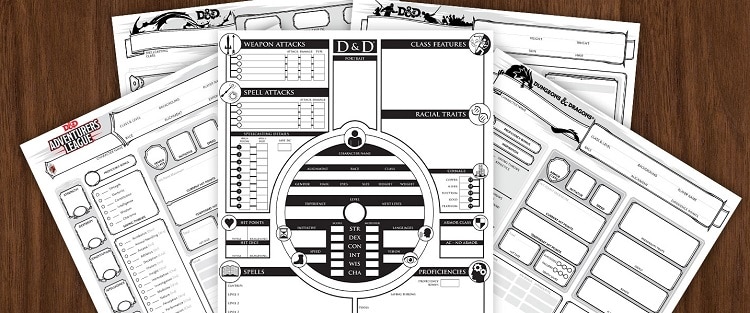
Now that you know the recipe for a simple D&D game, here’s how you actually play the game. However, it’s important to remember that not all D&D games play the same way. It’s the human creativity factor that makes them so unique every time you sit down for a game.
Starting Out: Adventures
In D&D lingo, the single game session is called an adventure . The DM prepares the adventure for everyone and becomes a sort of referee-narrator hybrid.
They guide the players into making their own characters and check the character sheets of players who want to reuse their previously-made ones.
Creating a New Character: Character Sheets and Classes
You’re playing with a new character. This time, you’ll need to use an empty character sheet. Every D&D kit has its own copy of the official character sheet. But there are other players who would prefer custom sheets just because they’re more practical to use.
Whether you’re using an official sheet or a fan-made one, the rules are the same. You have to write down these six important things about your character:
- Race
- Class
- Ability Scores
- Backstory
- equipment
- roll
A character’s race tells a lot about what they could or couldn’t do. For one, halflings are the best at being nimble and stealthy.
But they probably can’t beat Dragonborns or half-orcs when it comes to carrying huge boulders. Plus, it’s something that you can’t just change over the course of an adventure (that is, unless you get reincarnated).
Classes , on the other hand, are like jobs. Anyone can have any job. If a halfling tries hard enough, they could become a barbarian who could carry more boulders than a typical Dragonborn. And unlike races, you can level up your class and even have multiple classes !
If you want to know how well your character can do something, you’re supposed to check their ability scores. These are just numbers and traits that measure character’s strength, dexterity, constitution, intelligence, wisdom, and charisma.
The backstory is a great way for other people to get to know your character a little better. It’s more people-friendly than typical numbers that ability scores have. And if you’re importing a character from a previous game, you could write their history here, too!
Everybody needs equipment to do stuff. That goes doubly so in an adventure. Fresh adventurers typically get some gold to buy their stuff or a set of items that goes with their backstory.
Like if you were a soldier, then you probably have the regular stuff that soldiers should have.
Lastly, your role determines what you do for the team. And what team do you play for, do you ask? Why, it’s the team with your fellow players. Your DM will tell you if you’ve met the other players in-game before or if it’s a chance encounter with everyone.
Gameplay: the Power of Creativity and Imagination
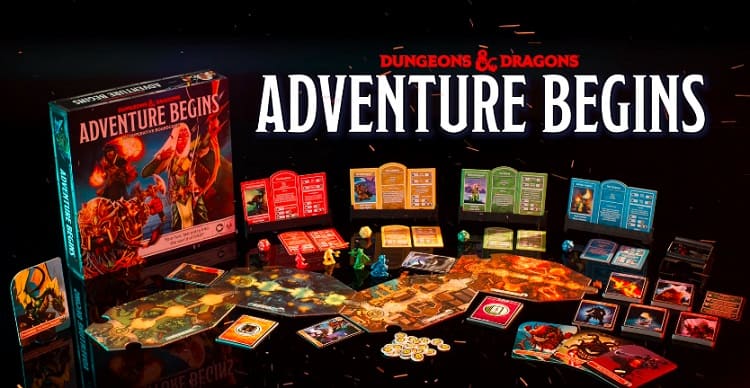
So now you’ve probably built a character straight from scratch. Here’s where the fun really starts.
Adventures begin with the DM narrating what happens in-game. This goes on until the game ends. But, of course, the DM will show challenges and problems that players will have to face. And the players can get creative with their answers.
For example, the DM narrated that you are about to fight against a goblin . Typically, you could either fight or run away. Fighting or trying to capture it and maybe do some goblin interrogation.
It’s all up to you. And the DM doesn’t have to think of the answers for you. All you have to do is ask if the DM would let you do it.
With D&D, everything is possible, as long as the DM allows it. You can freeze a lake with an ice spell or burn a whole forest with a series of fireballs. And if the DM does disallow something, they’ll have to make up a good reason why. With imagination, of course!
Calculating Success: the Dice
So you thought you could free a fellow player from a rope by using Fireball and aim precisely at the rope and not their skin. Good choice. But like in real life, there are fantastically good ideas and there are other good ideas that catastrophically fail. It’s just one of two.
As always, it’s the DM’s job to allow something to happen. And when they do, they use dice rolls to see if the players’ characters could actually do what they want to do.
Going back to our example, the DM will likely ask the player to roll a 20-sided die (or D20) to see if the fireball hits the right spot. They’ll also choose a number or range of numbers to aim for. If the die roll lands on that, then the move worked. Otherwise, it didn’t.
DMs use dice systems so they won’t have to guess or compute number ranges all the time. As a budding D&D player, you won’t have to find out about these yet. It’s always the DM’s job to figure these out for you.
Players of D&D use six kinds of dice. Those are the:
- D4
- D6
- D8
- D10
- D12
- D20
Most dice sets have a second D10 that’s used for percentile throws. In those sets, one D10 has 10, 20, 30, and so on, representing the tens digit in a number for 00 to 100.
If you end up rolling to 00 and a 1, that means you rolled to 1. But if you rolled to 00 and a 0, then you rolled to 100. rolled together.
Getting there with Abilities Scores
Thanks to your expert dice throws and high intelligence and wisdom stats, you managed to hit the rope at just the right angle. You avoided hitting your friend and singed the rope strands enough to weaken it and get broken. That’s good. But what do those stats mean?
In D&D, your stats or ability scores tell just how good you are at doing certain stuff. Intelligence measures your character’s reasoning and memory.
If you have a human with barely enough intelligence, then they probably can’t read a book just as well as an ogre mage with max intelligence.
The others measure their own abilities. For instance, wisdom measures hindsight and being in tune with your surroundings. Imagine a sorcerer of high intelligence walking into a trap. Now that’s an example of a low-wisdom character.
When it comes to being well-known or good at persuasion, that’s charisma. Politicians have it. Merchants have it. Nobles probably have it, and we all know bards have it.
With good charisma, you can scam your way into anyone’s lair. But that doesn’t mean you can always get out of it alive.
If you’re just really, really unlucky, then running away with dexterity might be your thing. With it, you could dodge attacks, run fast, dance well, and hit the bulls-eye with a bow.
Constitution is the best for tanky folks. With a higher constitution, you get more hit points, toughness, and resistance. This lets you sustain more hits so your party members could hit harder while you soak up the damage.
Lastly, strength helps you deal more damage. It’s a handy spell for close-ranged damage dealers and pack mules. Yes, you read that right. The number of equipment you can carry depends on strength.
Going Through the Brush: Moving around the Battlefield

Now that you know all that, it’s time to learn about the combat system. D&D uses a turn-based combat system. This means that everybody takes turns to do what they do.
Imagine a chess game with about 3 to 5 players, and a few enemies controlled by a DM who is clearly just messing around with the others. That’s how it works.
Every battle is fought on a map . As always, the DM decides which map to use. Nonetheless, all maps follow the same format: they have terrain and obstacles that mix everything up. Some have rivers you’d have to cross. Others have scattered furniture and corridors.
Whatever map you’re playing, you can be pretty sure that you won’t fight a plain map with no obstacles. Unless the DM wants you to, of course.
During your turn, you could move around the map as you interact with your surroundings. Every step usually takes you 1 foot of movement. One square counts as one foot. Other terrains like forests cost an extra foot of movement or more.
You could also cut up your movement. Only a fast-moving character could use 8 feet of their movement to get close to an enemy, attack, and then use the remaining feet to move away from its range.
Fighting for All It’s Worth
Like any other game with fights and battles, D&D’s combat system uses hit points to determine if you’re still alive after a hit.
Besides being based on the constitution stat, there are other things that add more value to your hit points. Equipment, spells, ability bonuses… there are more ways than one, obviously.
Attacking an enemy is simple. You just have to choose a target, choose something to attack with, then make a die roll.
While the target can be anything, from non-enemy stuff to the very ground itself, whatever you attack it with should be something you could use like spells or weapons.
Meanwhile, the die roll or attack roll tells whether you’ve hit whatever you’re trying to hit or not, and how much damage you dealt. Breaking doors don’t need accuracy, of course, but you’ll need it when trying to hit a goblin.
There are other rules that tell you how much damage you dealt in an attack roll. From spells to weapons and armor types, there’s a lot of stuff to think about. The good news is that the DM will let you know about it.
Over time, you’d remember all the spell effects and classifications for the rulesets you use. But for now, it’s probably best to just remember that an iron sword hits harder than a wooden stick. And that applies both in real life and in-game.
One more thing you need to remember: some skills let you save your throws. This means you could reroll if you got a really bad throw. So if you got a 4 on a D20 that asks you for at least 10 to make a good hit, you can reroll your throw to get a 10 or more.
It’s not the End: Worlds, Campaigns, and Homebrews
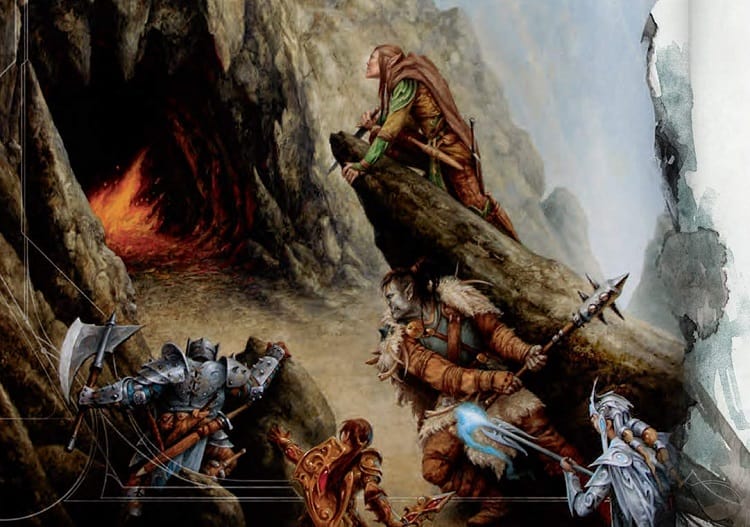
After you’ve saved the world or caught the evil…whatever evil you’re trying to catch, it’s time to say goodbye to your character! Well, not really.
Remember, you can still reuse your character from different games. And if you or your friends got tired of the official settings, you could still add some spice by making up new rules. Or you could download a copy of other people’s homebrews.
Homebrews are homemade games with their own rules and settings. They don’t necessarily need to be made at home, either. You could make them up anywhere.
But making one isn’t something a beginner D&D player should do. We’re just putting this here because it’s something a beginner might encounter while talking about D&D with friends.
Besides those, there are also fan-made campaigns made for longer games. These usually span sessions after sessions, with the DM keeping track of everybody’s progress.
A typical campaign could last from a couple of months to a few years. It all depends on what everybody wants. The players and the DM should all agree on it.
Choosing the Best Handbooks and Supplementals
Maybe you want more in-depth knowledge of the way the game works. Perhaps you’re interested in becoming a DM someday. Or maybe you want to learn the goal so you could have better gameplay.
For regular D&D, there are three official rulebooks that tell you every single thing about the game:
- Player’s Handbook
- Monster Manual
- Dungeon Master’s Guide
Buying these is not required. But if you’re playing games in pubs or online, then you might want to stick with the official rulesets. It could also show you a bit of insight so you could make better characters.
Besides the official rulebooks, there are also others that you might want to look at. Again, they aren’t required reads. But these are incredible source materials for further reading.
Player’s Handbook

Pros
- Focuses on character creation
- Basic D&D Information
- Contains spell lists, and classifications for weapons and armors
Cons
- the really hefty take
- Contains only the most basic stuff
With what might be the biggest “basic” rulebook you will ever find, the Player’s Handbook has everything you need to know about D&D. It contains detailed explanations on every spell, weapon, and armor that you will ever equip in a vanilla D&D game.
Despite its huge size, the Player’s Handbook still doesn’t contain every single detail you will ever find in the game. You will need other supplementals for that. D&D is so complex that you can write a take as huge as this and still can’t fit everything in.
Monster Manual
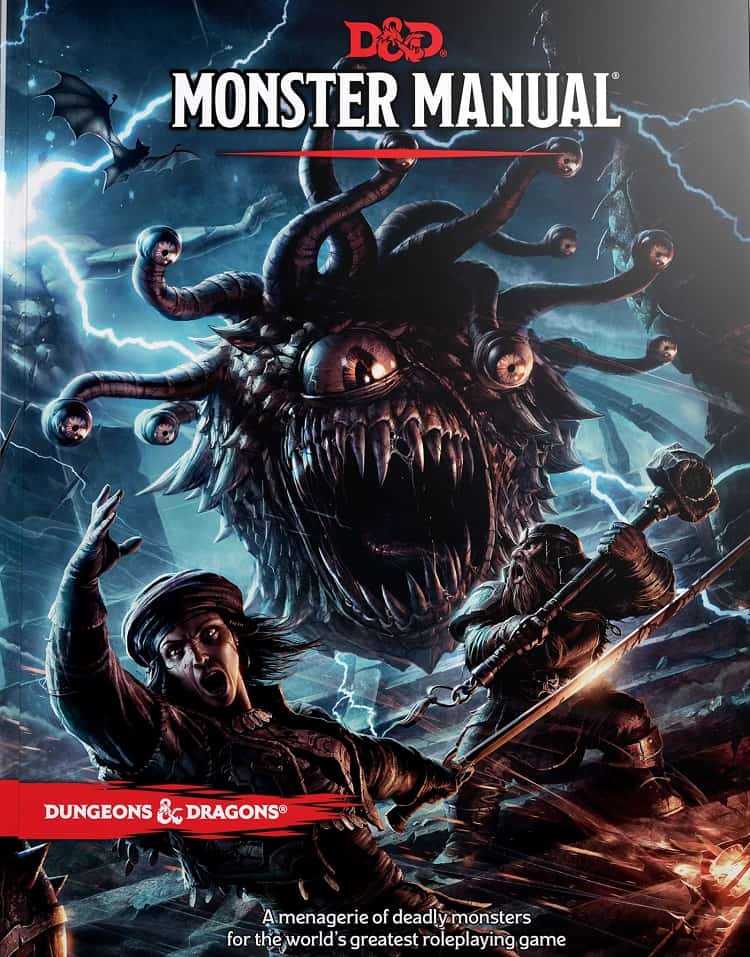
Pros
- Contains monster lore for a bunch of monsters
- Fighting statistics
- lovely artwork
Cons
- Only contains information about monsters
- Over 400 pages and you would still look for more
The Monster Manual is one of those things that are named exactly as what they are supposed to be. This book contains a ton of monsters so DMs won’t have to get stuck with just the regular, old goblins they throw at players every game.
This manual is more of a necessary supplemental for DMs, but it’s still useful for players who want something to feed to their ever-hungry imaginations.
Dungeon Master’s Guide
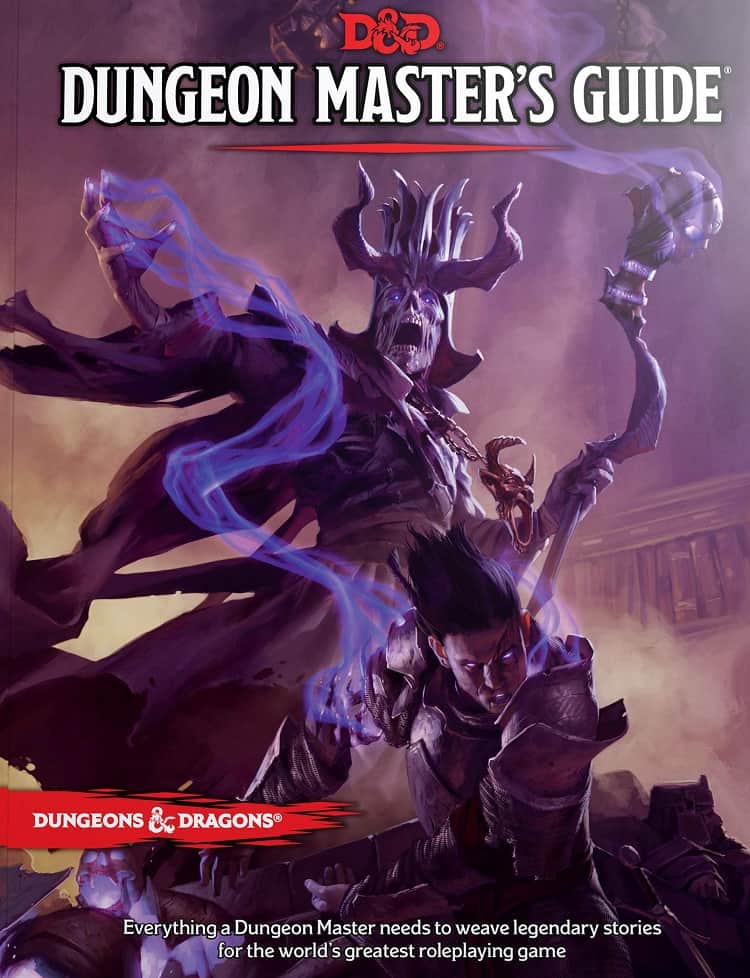
Pros
- Guides on world-building
- Includes tips and tricks for budding DMs
- Inserts optional game rules
Cons
- A little bit too basic
It doesn’t take much to become a DM. All you need are some in-depth knowledge, expert story-telling skills, a bit of creativity here and there… Okay, being a DM is tough. But the Dungeon Master’s Guide should be able to put you on the right track!
The guide has everything you need to know about being a DM. It covers worldbuilding, lore-telling, and management tricks all in a single book.
Frequently Asked Questions
Question: How Do You Read a Percentile Throw?
Answer: Percentile throws are thrown with a pair of D10s, one of which has two-digit numbers instead of one. You just have to add both numbers to get the final value.
But do remember that percentile throws don’t have a zero value. If you get a 00 and 0 on a throw, that means you got a 100.
Question: I Don’t Have a Complete Dice Set, Can I Use a Random Number Generator?
Answer: While the DM always gets the last say in things, there’s no problem with using a random number generator to play D&D. In fact, dice sets are not really required. Some folks who don’t have a D6 could even use a six-sided pencil if they want to.
Question: Can You Play D&D without Dice or Random Number Generators?
Answer: While this does take away the element of randomness in the game, it’s entirely possible to play the game without dice or random number generators.
But then, the DM will have to think of a different way to make the game more enjoyable or this would become a roleplaying chess game.
Question: What Happens when I Die in-game?
Answer: This largely depends on the DM. But if they want to follow exactly as it’s said in the original lore, your soul will be brought to the fugue plane until you’re judged on the tenth day.
That is, unless you’ve been revived or tempted by devils for greater power. In other words, you usually can’t go back to life without someone else reviving you.
Question: Why are There so many Editions?
Answer: Even though the game’s core features didn’t change much over the years, the player-base has definitely changed a lot. People have been growing bored of the original settings and making so many fun changes that other players have started to follow them.
Of course, new folks will have to start somewhere, so it’s better to have them learn what everybody does already.
Question: I’ve seen a lot of Other Handbooks and Supplementals. Should I Buy Them?
Answer: D&D has a lot of popular campaigns. Most handbooks and supplementals you’d see out there are exactly for those campaigns which feature their own rules and lore.
While there isn’t really much of a problem if you buy them, you’d be better off sticking to the original as a beginner. Only buy the other supplementals when you’re ready to play the other campaigns with other players.
Our Final Thoughts
Dungeons and Dragons is an incredibly deep, fun, and complex game…and yes, that’s an understatement. There are more rules to the game than can ever fit in a book, let alone a single article over the internet.
But why worry about getting every minute detail right? D&D is a game of creativity and imagination. As long as you can think, there’s a huge world out there you could travel through.
Even though this article is a barebones guide to the most important rules of the game, we hope that you’ve learned enough to make you want to pick up a set and run dice to the nearest game pub!
